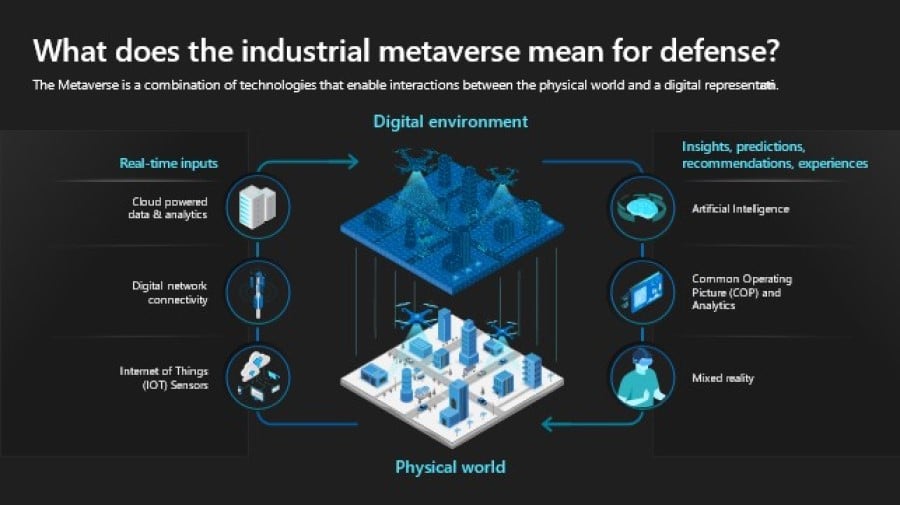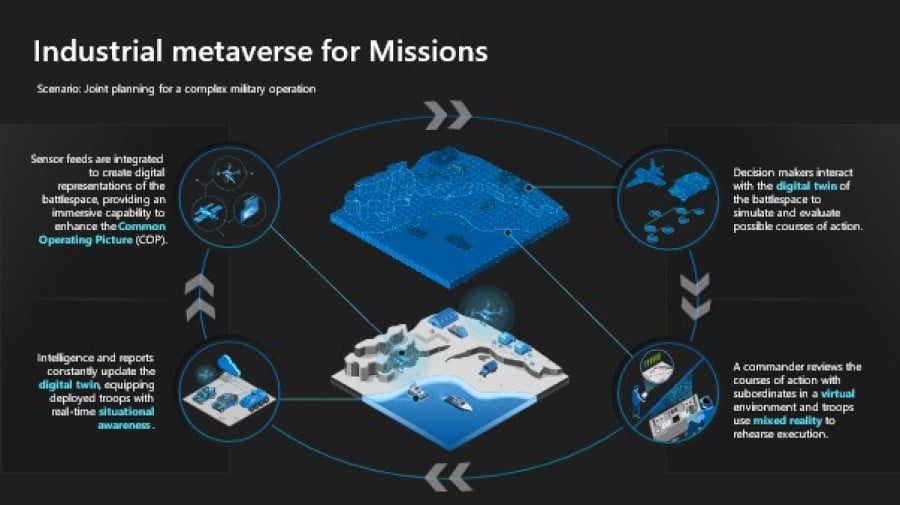Notizie per Categorie
Articoli Recenti
- New whitepaper outlines the taxonomy of failure modes in AI agents 24 Aprile 2025
- Understanding the threat landscape for Kubernetes and containerized assets 23 Aprile 2025
- [Launched] Generally Available: Instance Mix for Virtual Machine Scale Sets 22 Aprile 2025
- Microsoft’s AI vision shines at MWC 2025 in Barcelona 22 Aprile 2025
- [Launched] Generally Available: Announcing the Next generation Azure Data Box Devices 22 Aprile 2025
- [Launched] Generally Available: Cross-Region Data Transfer Capability in Azure Data Box Devices 21 Aprile 2025
- [Launched] Generally Available: Azure Ultra Disk Storage is now available in Spain Central 21 Aprile 2025
- [Launched] Generally Available: Azure Firewall resource specific log tables get Azure Monitor Basic plan support 21 Aprile 2025
- Hannover Messe 2025: Microsoft puts industrial AI to work 21 Aprile 2025
- Securing our future: April 2025 progress report on Microsoft’s Secure Future Initiative 21 Aprile 2025
Microsoft Defense and Intelligence: Unleashing the potential of the industrial metaverse
In recent years, the use of the term “metaverse” has seen increasing growth, sparking interest as well as cynicism based on the way that it is portrayed in popular media. In science fiction and Hollywood, the metaverse is depicted as a futuristic, all-encompassing virtual world, but this is far from the truth. In this article, we aim to demystify the metaverse and share how the ‘industrial metaverse’ embodies the confluence of many technologies of real importance—particularly to defense and intelligence organizations. We invite you to join us in demystifying some of the myths surrounding the metaverse and ground these capabilities in reality, as we explore how its industrial applications could revolutionize the defense industry and enhance mission capabilities, as well as the capability lifecycle itself.

Isn’t the “metaverse” just a virtual reality gaming environment?
Contrary to popular belief, the metaverse is not merely a virtual reality gaming environment, akin to the virtual holodeck in science fiction. While virtual reality certainly has a place in the metaverse, the metaverse goes beyond the visualization layer, transcending into an interconnected, persistent virtual environment for immersive interaction with data and AI.
Microsoft is seeing three distinct domains of the metaverse:
- The consumer metaverse: This is the one most of us are familiar with, underpinned by social technologies—like bitcoin, non-fungible tokens (NFTs), blockchain, and gaming—the consumer metaverse is focused on enhancing the entertainment and well-being experiences of individuals.
- The commercial metaverse (or enterprise metaverse in public sector scenarios): Where employees communicate and collaborate as they work toward achieving organizational goals. Microsoft cloud-based modern work technologies, such as immersive spaces for Microsoft Teams and Microsoft Mesh, are examples of the type of innovative technologies that are gaining rise because they can be accessed on PCs or virtual reality and mixed reality headsets and increase connection, build social capital in the workplace, and support collaboration for hybrid and remote workers all over the globe.
- The industrial metaverse: This is perhaps best positioned for defense industry use. This is where we see people and AI working together to design, develop, model, and optimize defense products, processes, and operations with real-time data in context. Furthermore, technological advances are modernizing the value chain with digital context to improve engineering and manufacturing processes, accelerate remote training, and automate tasks reducing the cognitive burden of humans.
Through the application of these distinct domains, and the intersection points across the consumer, commercial, and industrial spheres, we are likely to unlock new opportunities that could inevitably play a significant role in extending individual metaverse capabilities.
Unlocking the potential for defense
The concept of the metaverse presents an exciting opportunity for the defense industry to revolutionize its operations, capabilities, and preparedness. To realize this opportunity, it is important for the defense industry to recognize that, at its core, the metaverse offers the ability to break down physical barriers and greatly enhance decision support through the confluence of technologies that connect and integrate, store, model, analyze, visualize, and interact with the vast data resources that defense accesses.
At Microsoft, we are seeing two distinct lines of development for the defense metaverse emerge. The first extends from engineering and manufacturing, and is focused on capability development, where we envisage defense unlocking:
- Modernized defense capability lifecycle methods and processes.
- Improved engineering and manufacturing processes, tools, and methodologies.
- Data-oriented approaches enable greater visibility and more timely insights into physical and digital assets and systems.
Here, we see the industrial metaverse offering significant improvements over traditional engineering and manufacturing methods by facilitating a new way of engaging with designs, products, and systems through immersive and interactive experiences and digital models. This immersive experience can help people make sense of large quantities of information quickly, enhance design and engineering decision-making, reduce production and manufacturing costs, and provide direct feedback across the capability lifecycle from design and build through to whole-life sustainment. Modeling and simulation capabilities expand these insights by providing engineers, manufacturers, and capability managers with the ability to experience, experiment, and trial a near-infinite number of hypothetical scenarios and input conditions before ever going to physical production.
For example, through virtual prototyping, engineers and designers can collaborate in real-time, rapidly iterating on designs and testing digital capabilities before any physical production. This can significantly reduce costs, minimize errors, and shrink time-to-market for cutting-edge defense capabilities—thereby, getting them in the hands of end users under much more rapid timescales, and incorporating their feedback throughout the entire capability lifecycle.
Advancing defense missions
The second line of emerging industrial metaverse development is focused on the defense mission itself. Here, we start with the premise that a common operating picture (COP) can be represented as a digital twin of the battlespace and that the technologies available can enhance interaction with the digitally twinned battlespace, provide an immersive experience, and enhance decision support. We see a clear alignment between this and the ‘sensor to effector’ process, with the Industrial Metaverse for Missions incorporating:
- Internet of Military Things (IoMT) and other sensors (such as intelligence, surveillance, and reconnaissance devices) gather information from the physical world and physical platforms and assets.
- Digital network technologies like edge computing, 5G, mesh radios, and satellite connectivity, enable this data to be processed from edge-to-cloud and transmitted around the battlespace and to headquarters, at speed.
- Cloud infrastructure and high-performance computing (HPC) can be used to process and synthesize the data at scale to build and leverage complex machine learning models and algorithms.
- AI, which is used to reason over complex simulations, perform analytical processing, and enable the automation of routine tasks.
- Delivery of results in a user-friendly and accessible format, such as through advanced visualization techniques and mixed reality, thereby supporting immersive visualization and enhanced situational awareness.
All of these can be subject to, or utilized within, a closed feedback loop that enables the measurement of the impact of the effect as part of simulation and analysis in future cycles.

There are, of course, many other scenarios and use cases being explored for the industrial metaverse in the defense and intelligence industry. These use cases will continue to gain momentum, particularly as AI techniques continue to improve and become more ubiquitous in their deployment, and as augmented, mixed, and virtual reality technologies continue to advance in both capability and usability, for example:
- Advancing training platforms: The industrial metaverse can serve as an advanced training platform for defense and intelligence personnel and for the Defense Industrial Base (DIB) workforce. Immersive simulations, such as the Squad Immersive Virtual Trainer in development by the United States Army, can replicate realistic combat scenarios, allowing troops to enhance their skills, decision-making, and teamwork without the risks associated with live exercises and leading to a more agile and capable military force. We are also seeing the development of complex virtual environments imbued with computational modeling, which will see a myriad of applications across wargaming and strategic planning.
- Securing supply chains: We are also witnessing an increasing move towards the adoption of the industrial metaverse in manufacturing, including by DIB partners. In defense organizations, managing and securing supply chains is a complex task, involving numerous stakeholders, nodes, and methods. By leveraging DIB metaverse capabilities for supply chain coordination and management, supply chain managers can monitor and optimize processes, ensuring timely deliveries of crucial resources and equipment, and identifying potential vulnerabilities or bottlenecks before they occur.
- Bolstering cyber resilience: In an age where cyber threats are ever-evolving, the metaverse can also serve as a training ground for cybersecurity specialists, bolstering cyber resilience for defense. By modeling networks and simulating cyber-attack and response scenarios, cybersecurity professionals can hone their skills, strengthen network defenses, and develop robust countermeasures. We are seeing forward-thinking militaries and defense organizations increasingly deploying cyber ranges for purposes of immersive cyber skilling, and the inclusion of industrial metaverse capabilities has the power to further enhance cyber preparedness at scale.
Furthermore, the industrial metaverse transcends geographical boundaries, enabling seamless collaboration among defense organizations worldwide—and across public and private partnerships. Experts, strategists, policymakers, and industry members from different countries and organizations can come together virtually to share insights, exchange intelligence, and coordinate efforts, thereby fostering international cooperation and joint missions—and joint success.
Embrace the metaverse and its capabilities
Forward-thinking defense forces are already taking the plunge into industrial metaverse capabilities and are recognizing that full benefits can only be realized through a collective adoption of the technologies available. They also see the need for HPC both at hyperscale and extended to the edge. This requires a re-thinking of where on-premises capability is and is not appropriate, and how hybrid environments can assist in exploiting the HPC and AI services available at hyperscale whilst maintaining operational security of the most sensitive data. Recent operational examples have also highlighted the need for greater survivability through dispersed nodal command and control at all echelons, lending toward a greater need for edge capabilities and less reliance on vulnerable on-premises infrastructure. As technology advances at an even more rapid pace, the dilemma for defense organizations wishing to embrace new technologies will grow—the need for digital transformation has never been more apparent and requires foundational action now.
Furthermore, as the industrial metaverse continues to evolve and mature, it is essential to separate fact from fiction and seek to understand the profound opportunities and implications beyond the gaming and entertainment industries. The defense industry has the opportunity, now, to embrace the metaverse and leverage its capabilities to enhance innovation, collaboration, security, and preparedness. By embracing this concept and the underlying technologies early, the defense sector can step boldly into the future, safeguarding nations and fulfilling its critical mission of ensuring peace and security on a global scale. The journey has only just begun, and the metaverse holds an important key to unlocking a new era of defense modernization.
Learn more
To learn more about how Microsoft for Defense and Intelligence, and its partners are unlocking the potential for defense across capability development, advancing defense missions, securing supply chains, and bolstering cyber resilience, contact your account representative today.

Microsoft for Defense and Intelligence
Empowering militaries. Improving operations. Protecting national security.
The post Microsoft Defense and Intelligence: Unleashing the potential of the industrial metaverse appeared first on Microsoft Industry Blogs.
Source: Microsoft Industry Blog
